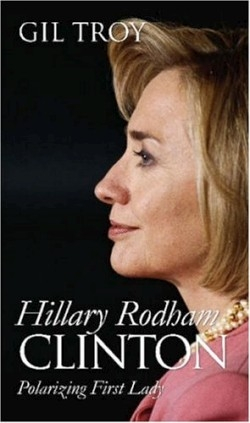
Hillary Rodham Clinton
Polarizing First Lady
With the exception of Eleanor Roosevelt, no other first lady has stirred as much controversy as Hillary Rodham Clinton. The author says she has “been bolstered by her friends, betrayed by her husband … interrogated by prosecutors, hounded by reporters … and lionized by women throughout the world.” Troy, a highly regarded historian at McGill University and the author of Morning in America: How Ronald Reagan Invented the 1980s*, Mr. and Mrs. President: From the Trumans to the Clintons, and See How They Run: The Changing Role of the Presidential Candidate, presents an illuminating and welcome investigation of Clinton as “the first feminist First Lady.” Troy’s refreshingly unbiased account reveals Clinton’s contributions and excesses and assesses her impact on the institution of the First Lady.
Her introduction to the nation was less than auspicious. It occurred on an episode of 60 Minutes* during Bill Clinton’s 1992 presidential campaign. The interview included probing questions about her marriage that led to an angry retort, which angered country singer Tammy Wynette and droves of working-class women.
Clinton regretfully ignored America’s distrust of powerful first ladies. She tackled National Health Care as a co-president, which contributed to the failure of a national plan and led to a backlash that made her a scapegoat for President Clinton’s failed first hundred days. The author is especially good at identifying characteristics that the public wants in a First Lady. The most popular ones—Mamie Eisenhower, Jackie Kennedy, Barbara Bush, and Laura Bush—avoid policy fights and enjoy the traditional role as the nation’s First Hostess. More outspoken First Ladies, including Betty Ford, Rosalyn Carter, and Nancy Reagan, who downplayed the “traditional gossamer shackles” the position imposes, quickly drew public mistrust with cries of “who elected her?”
During President Clinton’s first term, Hillary became embroiled in Whitewater, Travelgate, and cattle future speculations, while blaming understandable attacks on “a vast right-wing conspiracy,” which made her less popular than her amoral spouse. During Clinton’s second term, Mrs. Clinton became a more appealing First Lady by taking on such projects as establishing the Mother Teresa Home in Washington D.C. and becoming honorary chair of the President’s Committee on the Arts and Humanities. However, she also had to deal with the embarrassing Lewinsky affair and the presidential impeachment.
Troy notes that the public never did support policy roles for Mrs. Clinton but did offer her sympathy for her husband’s philandering and came to admire her for assuming acceptable First Lady responsibilities. Ultimately—as Senator Hillary Clinton has demonstrated—the author concludes that real political power comes from winning elections and not from being married to the president.
Reviewed by
Karl Helicher
Disclosure: This article is not an endorsement, but a review. The publisher of this book provided free copies of the book to have their book reviewed by a professional reviewer. No fee was paid by the publisher for this review. Foreword Reviews only recommends books that we love. Foreword Magazine, Inc. is disclosing this in accordance with the Federal Trade Commission’s 16 CFR, Part 255.
